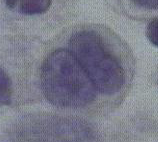Cell Biology/Introduction/What is living
The question, "What is life?" has been one of many long discussions and the answer may depend upon your initial definitions.
Life is cells. Cell theory consists of three basic points.
- All living things are made of cells.
- The cell is the smallest living thing that can perform all the functions of life.
- All cells must come from preexisting cells.
Some definitions of life are:
- The quality that distinguishes a vital and functional being from a non-living or dead body or purely chemical matter.
- The state of a material complex or individual characterized by the capacity to perform certain functional activities including metabolism, growth, and reproduction.
- The sequence of physical and mental experiences that make up the existence of an individual.
Seven Criteria
[edit | edit source]
In biology, whether life is present is determined based on the following seven criteria:
- It should maintain some balanced conditions in its inner structure. This is called Homeostasis
- Its structure is highly organized.
- It should be able to break down or build up nutrients to release or store energy based on need. This is called Metabolism
- It should grow, which means its structure changes as time goes by in an advantageous manner.
- It should show adaptation to the environment.
- It should be able to respond to environmental stimuli on demand (as opposed to adaptation, which occurs over time).
- It should be able to reproduce itself.
Another way of remembering the seven life processes for children is:-
Movement Respiration Sensitivity Growth Reproduction Excretion Nutrition
Note the beginning letter of all the seven life processes, it spells out MRS GREN.
Virus Controversy
[edit | edit source]
This definition of life has got some problems to it though: As an example, let's take viruses. Just by your intuition, what would you say: Are viruses alive or dead? Most people's intuitive answer is: Viruses are alive. When we suffer from any viral infection, we have the feeling that these viruses that cause our infection are alive. According to the seven principles as shown above, viruses are dead, as dead as a piece of plastic: They can't reproduce themselves. To understand that, we want to make a quick excursion to the replication mechanism of viruses: Viruses are really strange in their reproduction technique. Humans and other animals reproduce by the means of sexual intercourse, bacteria do something called binary fission: They divide. One cell divides itself into two, the two daughter cells divide again an so on. The point here is that both bacteria and animals or humans reproduce actively without any help from outside. Keep this point in mind as we move on to the viruses. Viruses need other cells to reproduce. They "drill" their way into another cell, called the host cell. Here, they release the genetic material they carry and, by a complex mechanism that shouldn't be explained further at this point, force their host cell to produce exact copies of the virus. After some time, the host cell is full of viruses and bursts, releasing the new viruses into the environment. Thus viruses need help to reproduce. They can't reproduce at all without a host cell and therefore do not fulfill the requirement "It should be able to reproduce itself". Looking at the other parts of the definition we find that viruses maintain some degree of homeostasis (1), being able to keep its protenatious and nucleic machinery separated from the outside world. Viruses also show adaptation(5), with their ability to mutate in order to affect new organisms. In addition to the reproduction problem, they also fail to meet the other requirements, showing no cellular organization (2) (or indeed cells at all), metabolism (3), or growth (4).
This example is just to illustrate the problems that arise using this definition. Life is not something one can define as any other technical term in science. Life arose from dead matter around 4 billion years ago. When life can arise from dead matter, there can't be a precise border line between these two.
The cell is alive, what about parts of it?
[edit | edit source]Organelles are parts of eukaryotic cells (ones having a nucleus). They help the cell carry out its task. But, are they alive? Do they meet 7 criteria?
When a cell divides into two, organelles also 'reproduce'. They also age from young to old and then die. Some of them carry out the task of taking food, converting it to nutrients and energy. They can also react to stimuli, and surely they can evolve. Of course one can argue that all the above are coordinated by the nucleus. But it seems there are some signs of life there.
Yes, there are! Scientists have proven that some bacteria, in its evolutionary way, had found a home in other cells. They felt comfortable when living there, and gradually, they have become a part of that cell. Chloroplasts, for example, used to be bacteria. At some point in their evolutionary history these cyanobacteria formed a mutual symbiosis with the proto-eukaryote ancestors of algae. Since that time, chloroplasts have been helping plant cells photosynthesize.
Another example is mitochondria, organelles that produce energy for eukaryotes. Very likely a parasitic organism originally, the ancestor of the mitochondria we see today colonized the larger proto-eukarotes. It is unknown if the mitochondrial ancestor originally had a metabolic role in its life cycle or if it adapted to the changing conditions after it was engulfed.
